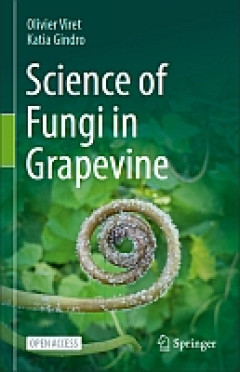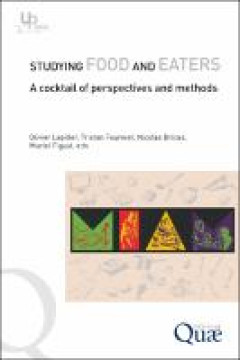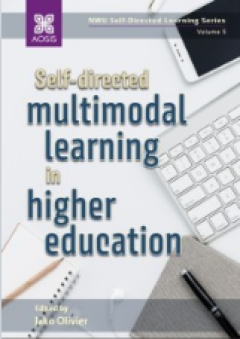Ditapis dengan

E-book Science of Fungi in Grapevine
This open access book provides a comprehensive exploration of the relationship between fungi and grapevines, covering contemporary mycological classifications, pathogens, the mycobiome, endophytes, and mycorrhizae. Inspired by the French book "La Vigne, Maladies Fongiques" by the same authors, which won first prize at the 2015 OIV book competition (Organisation Internationale de la Vigne et du …
- Edisi
- -
- ISBN/ISSN
- 9783031686634
- Deskripsi Fisik
- 466 halaman, ilus.
- Judul Seri
- -
- No. Panggil
- 579.5 VIR s
E-book Eating in The City : Socio-anthropological Perspectives from Africa, L…
Algeria’s high petroleum revenues1 in the 2000s prompted massive food imports in a highly EU-dependent socioeconomic and political setting. The rapid changes in food consumption patterns that occurred in Algeria during this prosperous period partially involved greater sugar and fat intake to the detriment of vegetable proteins (Chikhi and Padella, 2014). They also reflect the polit…
- Edisi
- -
- ISBN/ISSN
- 9782759232826
- Deskripsi Fisik
- 161 hlm
- Judul Seri
- -
- No. Panggil
- 301 SOU e

E-Book Studying Food and Eaters: A cocktail of perspectives and methods
Researchers rarely reveal the details of the methodological choices on which their research is based. The theoretical and practical considerations that have guided them in these choices often remain implicit. In this book, the focus is on methods for studying food and 'eaters'. The use of the term 'eaters' is intended to distinguish them from the simple image of a consumer. It emphasises the mu…
- Edisi
- -
- ISBN/ISSN
- 9782759236633
- Deskripsi Fisik
- 218 halaman
- Judul Seri
- -
- No. Panggil
- 641.3 LEP s
E-book LexArt Words for Painting (France, Germany, England, The Netherlands, …
The chronological and geographical limitations of this explorationof the terms and notions were justified by the growing importance,in both number and diversity, of the publications on art in NorthernEurope from 1600 onwards, and more particularly from 1604, the yearof publication of Karel Van Mander’sHet Schilder-Boeckuntil 1750,a moreflexible date depending on the countries studied. This da…
- Edisi
- -
- ISBN/ISSN
- 9782367812854
- Deskripsi Fisik
- 525 hlm
- Judul Seri
- -
- No. Panggil
- 750.3 BLA l

E-book Self-directed multimodal learning in higher education
- Edisi
- -
- ISBN/ISSN
- 9781928523420
- Deskripsi Fisik
- xxxv, 470 p. ; ill
- Judul Seri
- -
- No. Panggil
- 378 OLI s
- Edisi
- -
- ISBN/ISSN
- 9781928523420
- Deskripsi Fisik
- xxxv, 470 p. ; ill
- Judul Seri
- -
- No. Panggil
- 378 OLI s
E-book Land Use and Food Security in 2050 : A Narrow Road
"After a first foresight study on ‘World food security in 2050’ (Agrimonde), CIRAD and INRA have turned their attention to a new foresight exercise on ‘Land use and food security in 2050’ (Agrimonde-Terra). This new study seeks to highlight levers that could modify ongoing land-use patterns for improved food and nutrition security. Agrimonde-Terra proposes a trend analysis on the global…
- Edisi
- -
- ISBN/ISSN
- 978-2-7592-2879-9
- Deskripsi Fisik
- 400 hlm
- Judul Seri
- -
- No. Panggil
- 338.1 MOU l
 Karya Umum
Karya Umum  Filsafat
Filsafat  Agama
Agama  Ilmu-ilmu Sosial
Ilmu-ilmu Sosial  Bahasa
Bahasa  Ilmu-ilmu Murni
Ilmu-ilmu Murni  Ilmu-ilmu Terapan
Ilmu-ilmu Terapan  Kesenian, Hiburan, dan Olahraga
Kesenian, Hiburan, dan Olahraga  Kesusastraan
Kesusastraan  Geografi dan Sejarah
Geografi dan Sejarah